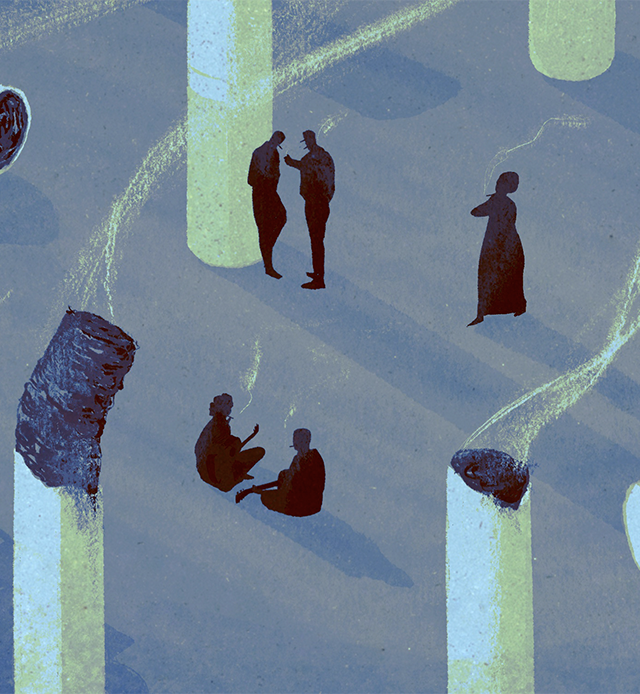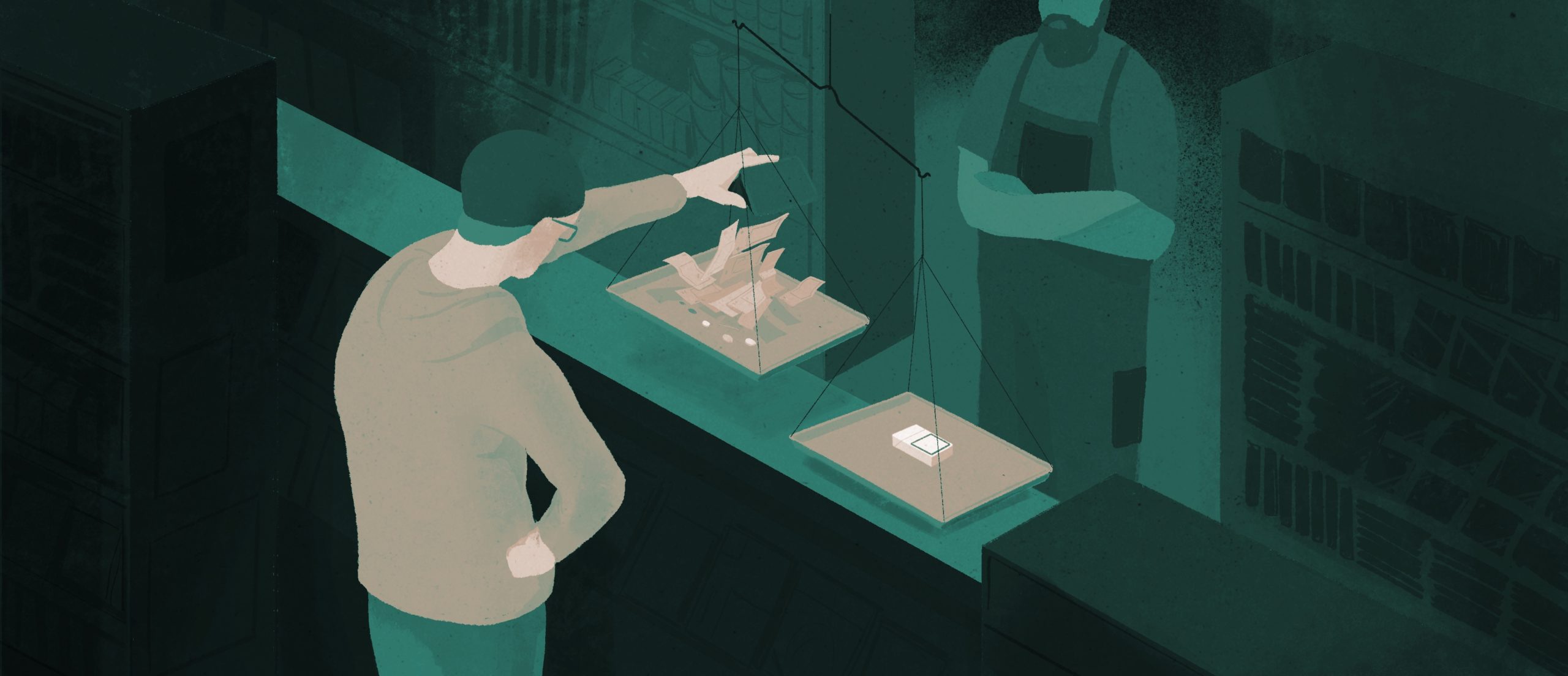References
General:
Lencucha R, Drope J, Magati P, Sahadewo GA. 2022. Tobacco farming: Overcoming an understated impediment to comprehensive tobacco control. Tobacco Control. https://tobaccocontrol.bmj.com/content/tobaccocontrol/31/2/308.full.pdf.
Country-level farming studies:
Chavez JJ, Drope J, Li Q, Aloria MJ. 2016. The Economics of Tobacco Farming in the Philippines. Quezon City: Action for Economic Reforms and Atlanta: American Cancer Society.
Drope J, Li Q, Araujo E, Harimurti P, Sahadewo G, Nargis N, Durazo J, Witoelar F, Sikoki B. The Economics of Tobacco Farming in Indonesia. Indonesia Tobacco Employment Studies. Washington DC: World Bank. October 2017.
Ghulam Hussain AKM, Rouf A, Shimul S, Nargis N, Kessaram TM, Mahfuzul Huq S, Kaur J, Shiekh MKA, Drope J. 2020. The Economic Cost of Tobacco Farming in Bangladesh. International Journal of Environmental Research and Public Health 17, 24 (9447); https://www.mdpi.com/1660-4601/17/24/9447.
Goma F, Drope J, Zulu R, Li Q, Banda J. The Economics of Tobacco Farming in Zambia. Lusaka: University of Zambia School of Medicine and Atlanta: American Cancer Society. December, 2015.
Kagaruki L. Alternative crops to tobacco: a gateway for tobacco farmers Ruvuma region, southern Tanzania. Tobacco Induced Diseases. 2018;16(1):A948. doi:10.18332/tid/84721.
Magati P, Hecock D, Li Q, Drope J. 2022. The Economics of Tobacco Farming in Kenya: A Longitudinal Study. International Institute for International Affairs and Tobacconomics. https://www.tobacconomics.org/research/the-economics-of-tobacco-farming-in-kenya-a-longitudinal-study/.
Magati M, Lencucha R, Li Q, Drope J, Labonté R, Appau A, Makoka D, Goma F, Zulu R. 2018. Costs, Contracts and the Narrative of Prosperity: An Economic Analysis of Smallholder Tobacco Farming Livelihoods in Kenya. Tobacco Control. http://dx.doi.org/10.1136/tobaccocontrol-2017-054213.
Magati P, Li Q, Drope J, Lencucha R, Labonté R. 2016. The Economics of Tobacco Farming in Kenya. Nairobi: International Institute for Legislative Affairs and Atlanta: American Cancer Society.
Makoka D, Appau A, Lencucha R, Drope J. 2016. Farm-Level Economics of Tobacco Production in Malawi. Lilongwe: Centre for Agricultural Research and Development and Atlanta: American Cancer Society.
Makoka D, Drope J, Appau A, Labonté R, Li Q, Goma F, Zulu R, Magati P, Lencucha R. 2016. Costs, revenues and profits: An economic analysis of smallholder tobacco farmer livelihoods in Malawi. Tobacco Control 26, 6:634-640 http://dx.doi.org/10.1136/tobaccocontrol-2016-053022.
Mijovic Hristovska, B., Mijovic Spasova, T., Trpkova-Nestorovska, M., Tashevska, B., Trenovski, B., & Kozeski, K. (2021). The Economics of Tobacco Subsidies in North Macedonia [Policy Brief]. Analytica. https://www.tobacconomics.org/research/the-economics-of-tobacco-subsidies-in-north-macedonia/.
Nguenha N, Cunguara B, Bialous S, Drope J, Lencucha R. 2020. An overview of the policy and market landscape of tobacco production and control in Mozambique. International Journal of Environmental Research and Public Health. https://www.mdpi.com/1660-4601/18/1/343.
Sahadewo G, Drope J, Li Q, Nargis N, Witoelar F. 2020. Tobacco or Not Tobacco: Predicting Farmers Income in Indonesia. Tobacco Control. https://tobaccocontrol.bmj.com/content/early/2020/05/13/tobaccocontrol-2019-055274.
Sahadewo, G.A., Drope, J., Witoelar, F., Li, Q., & Lencucha, R. (2021). The Economics of Tobacco Farming in Indonesia: Results from Two Waves of a Farm-Level Survey [Report]. https://www.tobacconomics.org/files/research/654/indonesia-economics-of-tobacco-farming.pdf.
Sahadewo, G.A., Drope, J., Witoelar, F., Li, Q., & Lencucha, R. (2021). The Economics of Tobacco Farming in Indonesia: 3rd Wave Tobacco Farmers Survey [Report]. Tobacconomics. https://www.tobacconomics.org/files/research/748/entobacco-farming-report-wave3.pdf.
Talukder A, Haq I,Ali M, Drope J. 2020. Factors Associated with Cultivation of Tobacco in Bangladesh: A Multilevel Modelling Approach. Int. J. Environ. Res. Public Health 17(12), 4277; https://doi.org/10.3390/ijerph17124277.
Growing map data:
Food and Agriculture Organization (United Nations). Tobacco Production. https://www.fao.org/faostat/en/#data/QCL.
Alternatives to tobacco growing:
Clark M, Magati P, Drope J, Labonte R, Lencucha R. 2020. Understanding Alternatives to Tobacco Production in Kenya: A Qualitative Analysis at the Sub-National Level. International Journal of Environmental Research and Public Health. https://www.mdpi.com/1660-4601/17/6/2033/pdf.
Lencucha R, Moyo T, Drope J, Labonté R, Appau A, Makoka D. 2020. A meaningful shift to alternatives to tobacco growing in Malawi? A qualitative analysis of policy and perspectives. Health Policy and Planning. https://academic.oup.com/heapol/article/doi/10.1093/heapol/czaa057/5855902.
Li Q, Magati P, Lencucha R, Labonte R, Makoka D, Drope J. 2019. Understanding Tobacco Farmers’ Livelihood Decisions. Nicotine and Tobacco Research. Doi: 10.1092/ntr/ntz011. PubMed PMID: 30690496.
Li V, Wang Q, Xia N, Tang S, Wang C. 2012. Tobacco Crop Substitution: Pilot Effort in China. American Journal of Public health 102, 9: 1660-63.
Sahadewo GA, Drope J, Li Q, Witoelar F, Lencucha R. 2020. In-and-Out of Tobacco: Shifting Behavior of Tobacco Farmers in Indonesia. International Journal of Environmental Research and Public Health. 17,24 (9416); https://www.mdpi.com/1660-4601/17/24/9416/htm.
Why farmers grow tobacco:
Appau A, Drope J, Goma F, Magati P, Labonte R, Makoka M, Zulu R, Li Q, Lencucha R. 2019. Why Farmers Grow Tobacco: Evidence from Malawi, Kenya and Zambia. Nicotine & Tobacco Research. https://academic.oup.com/ntr/advance-article-abstract/doi/10.1093/ntr/ntz173/5564389.
Appau A, Drope J, Witoelar F, Chavez JJ, Lencucha R. 2019. Why do farmers grow tobacco? A Qualitative Exploration of Farmers Perspectives in Indonesia and Philippines. International Journal of Environmental Research and Public Health. https://www.mdpi.com/1660-4601/16/13/2330.
General:
Lencucha R, Drope J, Magati P, Sahadewo GA. 2022. Tobacco farming: Overcoming an understated impediment to comprehensive tobacco control. Tobacco Control. https://tobaccocontrol.bmj.com/content/tobaccocontrol/31/2/308.full.pdf.
Country-level farming studies:
Chavez JJ, Drope J, Li Q, Aloria MJ. 2016. The Economics of Tobacco Farming in the Philippines. Quezon City: Action for Economic Reforms and Atlanta: American Cancer Society.
Drope J, Li Q, Araujo E, Harimurti P, Sahadewo G, Nargis N, Durazo J, Witoelar F, Sikoki B. The Economics of Tobacco Farming in Indonesia. Indonesia Tobacco Employment Studies. Washington DC: World Bank. October 2017.
Ghulam Hussain AKM, Rouf A, Shimul S, Nargis N, Kessaram TM, Mahfuzul Huq S, Kaur J, Shiekh MKA, Drope J. 2020. The Economic Cost of Tobacco Farming in Bangladesh. International Journal of Environmental Research and Public Health 17, 24 (9447); https://www.mdpi.com/1660-4601/17/24/9447.
Goma F, Drope J, Zulu R, Li Q, Banda J. The Economics of Tobacco Farming in Zambia. Lusaka: University of Zambia School of Medicine and Atlanta: American Cancer Society. December, 2015.
Kagaruki L. Alternative crops to tobacco: a gateway for tobacco farmers Ruvuma region, southern Tanzania. Tobacco Induced Diseases. 2018;16(1):A948. doi:10.18332/tid/84721.
Magati P, Hecock D, Li Q, Drope J. 2022. The Economics of Tobacco Farming in Kenya: A Longitudinal Study. International Institute for International Affairs and Tobacconomics. https://www.tobacconomics.org/research/the-economics-of-tobacco-farming-in-kenya-a-longitudinal-study/.
Magati M, Lencucha R, Li Q, Drope J, Labonté R, Appau A, Makoka D, Goma F, Zulu R. 2018. Costs, Contracts and the Narrative of Prosperity: An Economic Analysis of Smallholder Tobacco Farming Livelihoods in Kenya. Tobacco Control. http://dx.doi.org/10.1136/tobaccocontrol-2017-054213.
Magati P, Li Q, Drope J, Lencucha R, Labonté R. 2016. The Economics of Tobacco Farming in Kenya. Nairobi: International Institute for Legislative Affairs and Atlanta: American Cancer Society.
Makoka D, Appau A, Lencucha R, Drope J. 2016. Farm-Level Economics of Tobacco Production in Malawi. Lilongwe: Centre for Agricultural Research and Development and Atlanta: American Cancer Society.
Makoka D, Drope J, Appau A, Labonté R, Li Q, Goma F, Zulu R, Magati P, Lencucha R. 2016. Costs, revenues and profits: An economic analysis of smallholder tobacco farmer livelihoods in Malawi. Tobacco Control 26, 6:634-640 http://dx.doi.org/10.1136/tobaccocontrol-2016-053022.
Mijovic Hristovska, B., Mijovic Spasova, T., Trpkova-Nestorovska, M., Tashevska, B., Trenovski, B., & Kozeski, K. (2021). The Economics of Tobacco Subsidies in North Macedonia [Policy Brief]. Analytica. https://www.tobacconomics.org/research/the-economics-of-tobacco-subsidies-in-north-macedonia/.
Nguenha N, Cunguara B, Bialous S, Drope J, Lencucha R. 2020. An overview of the policy and market landscape of tobacco production and control in Mozambique. International Journal of Environmental Research and Public Health. https://www.mdpi.com/1660-4601/18/1/343.
Sahadewo G, Drope J, Li Q, Nargis N, Witoelar F. 2020. Tobacco or Not Tobacco: Predicting Farmers Income in Indonesia. Tobacco Control. https://tobaccocontrol.bmj.com/content/early/2020/05/13/tobaccocontrol-2019-055274.
Sahadewo, G.A., Drope, J., Witoelar, F., Li, Q., & Lencucha, R. (2021). The Economics of Tobacco Farming in Indonesia: Results from Two Waves of a Farm-Level Survey [Report]. https://www.tobacconomics.org/files/research/654/indonesia-economics-of-tobacco-farming.pdf.
Sahadewo, G.A., Drope, J., Witoelar, F., Li, Q., & Lencucha, R. (2021). The Economics of Tobacco Farming in Indonesia: 3rd Wave Tobacco Farmers Survey [Report]. Tobacconomics. https://www.tobacconomics.org/files/research/748/entobacco-farming-report-wave3.pdf.
Talukder A, Haq I,Ali M, Drope J. 2020. Factors Associated with Cultivation of Tobacco in Bangladesh: A Multilevel Modelling Approach. Int. J. Environ. Res. Public Health 17(12), 4277; https://doi.org/10.3390/ijerph17124277.
Growing map data:
Food and Agriculture Organization (United Nations). Tobacco Production. https://www.fao.org/faostat/en/#data/QCL.
Alternatives to tobacco growing:
Clark M, Magati P, Drope J, Labonte R, Lencucha R. 2020. Understanding Alternatives to Tobacco Production in Kenya: A Qualitative Analysis at the Sub-National Level. International Journal of Environmental Research and Public Health. https://www.mdpi.com/1660-4601/17/6/2033/pdf.
Lencucha R, Moyo T, Drope J, Labonté R, Appau A, Makoka D. 2020. A meaningful shift to alternatives to tobacco growing in Malawi? A qualitative analysis of policy and perspectives. Health Policy and Planning. https://academic.oup.com/heapol/article/doi/10.1093/heapol/czaa057/5855902.
Li Q, Magati P, Lencucha R, Labonte R, Makoka D, Drope J. 2019. Understanding Tobacco Farmers’ Livelihood Decisions. Nicotine and Tobacco Research. Doi: 10.1092/ntr/ntz011. PubMed PMID: 30690496.
Li V, Wang Q, Xia N, Tang S, Wang C. 2012. Tobacco Crop Substitution: Pilot Effort in China. American Journal of Public health 102, 9: 1660-63.
Sahadewo GA, Drope J, Li Q, Witoelar F, Lencucha R. 2020. In-and-Out of Tobacco: Shifting Behavior of Tobacco Farmers in Indonesia. International Journal of Environmental Research and Public Health. 17,24 (9416); https://www.mdpi.com/1660-4601/17/24/9416/htm.
Why farmers grow tobacco:
Appau A, Drope J, Goma F, Magati P, Labonte R, Makoka M, Zulu R, Li Q, Lencucha R. 2019. Why Farmers Grow Tobacco: Evidence from Malawi, Kenya and Zambia. Nicotine & Tobacco Research. https://academic.oup.com/ntr/advance-article-abstract/doi/10.1093/ntr/ntz173/5564389.
Appau A, Drope J, Witoelar F, Chavez JJ, Lencucha R. 2019. Why do farmers grow tobacco? A Qualitative Exploration of Farmers Perspectives in Indonesia and Philippines. International Journal of Environmental Research and Public Health. https://www.mdpi.com/1660-4601/16/13/2330.




